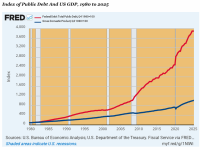You are using an out of date browser. It may not display this or other websites correctly.
You should upgrade or use an alternative browser.
You should upgrade or use an alternative browser.
Welcome to the Precious Metals Bug Forums
Welcome to the PMBug forums - a watering hole for folks interested in gold, silver, precious metals, sound money, investing, market and economic news, central bank monetary policies, politics and more.
Why not register an account and join the discussions? When you register an account and log in, you may enjoy additional benefits including no Google ads, market data/charts, access to trade/barter with the community and much more. Registering an account is free - you have nothing to lose!
- Messages
- 34,566
- Reaction score
- 5,847
- Points
- 288
Slave labor is big business in the U.S.
http://money.cnn.com/2012/08/14/smallbusiness/federal-prison-business/index.html?iid=HP_LN
"Unicor is a government-run enterprise that employs over 13,000 inmates -- at wages as low as 23 cents an hour -- to make goods for the Pentagon and other federal agencies."
"Unicor made over $900 million in revenue last year and faces more heat from businesses and lawmakers as the economy takes a toll on small manufacturers."
The link in the above quote no longer works but the link below does and is keeping within the ideas of the post.

Report: Use of Prison Labor at Hyundai Supplier Plants Drives Down Wages Overall
The Columbia University study found that, when the share of prison labor at a Hyundai Motor supplier rises by 10%, wages for non-incarcerated workers fall by 10-14%.
www.supplychainbrain.com
Why has the UAW said nothing about this?
That makes me wonder of the veracity of this. Unions are just about useless these days; but one thing they're REAL good at is, getting in and organizing an often-apathetic (not mistreated) workforce. Like Starcucks.
That makes me wonder of the veracity of this. Unions are just about useless these days; but one thing they're REAL good at is, getting in and organizing an often-apathetic (not mistreated) workforce. Like Starcucks.
- Messages
- 34,566
- Reaction score
- 5,847
- Points
- 288

Fed seeks public input on potential changes to its check services
The Federal Reserve is seeking public input on potential changes to the check services it provides, although support for the
bankingjournal.aba.com
- Messages
- 34,566
- Reaction score
- 5,847
- Points
- 288
Bessent calls for overhaul of regulator that protects US financial system
Treasury Secretary Scott Bessent wants to overhaul a federal regulatory group, launched following the 2008 housing bust, that is tasked with safeguarding the U.S. financial system.The 15-member panel, known as the Financial Stability Oversight Council (FSOC), was established by the 2010 Dodd-Frank Act to help spot and defuse systemic financial risks.
The council is chaired by the Secretary of the Treasury and includes the leaders from other financial regulatory agencies, such as the director of the Consumer Financial Protection Bureau and the head of the Board of Governors of the Federal Reserve System.
In a letter released Thursday, Bessent called for looser FSOC regulations, saying that "too often in the past, efforts to safeguard the financial system have resulted in burdensome and often duplicative regulations."
More:
https://www.msn.com/en-us/money/mar...financial-system/ar-AA1SbhWP?ocid=socialshare


